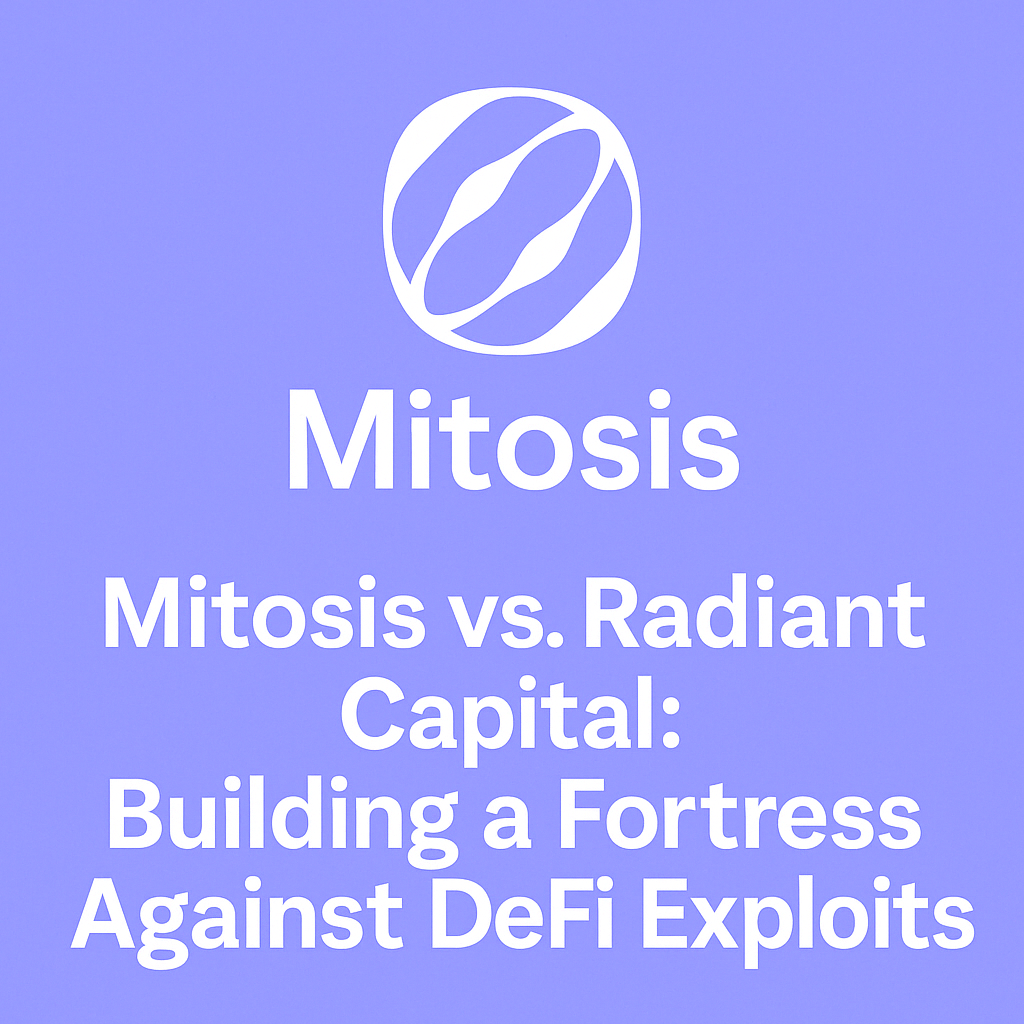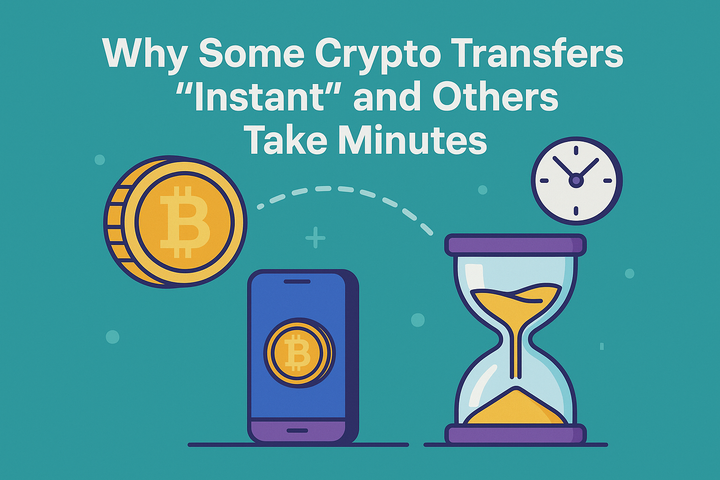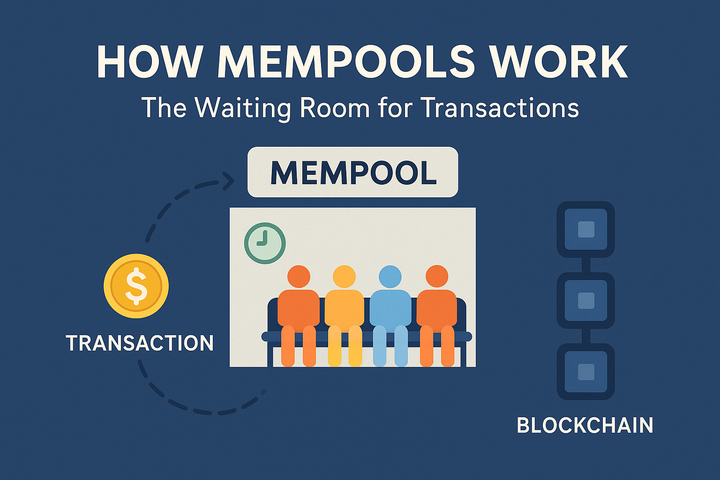🛡️ Avoiding Radiant’s Fate: How Mitosis Can Build a Fortress Against DeFi Exploits

🧬 Radiant Capital’s $60M Collapse: A Dual Threat
In 2024, Radiant Capital, a cross-chain DeFi lending protocol, was rocked by two devastating attacks:
- $4.5M flash loan exploit in January
- $50–58M multisig key compromise in October
Once a rising star on Arbitrum and BSC, Radiant’s TVL plunged from $300M to $6M, exposing systemic issues in smart contract security and multisig operations.
These incidents are a powerful lesson for protocols like Mitosis—a modular liquidity infrastructure securing cross-chain liquidity mesh between ecosystems like Ethereum, Cosmos, Solana, and more. Let’s explore how Mitosis can learn from Radiant and harden its security stack.
🚨 The Exploits, in Brief
1. January Flash Loan Attack ($4.5M Loss)
- Vector: Rounding error in a forked Compound/Aave
rayDiv()math function - Mistake: Activated market with non-zero collateral factor
- Exploit: Inflated liquidity index enabled attacker to withdraw more than deposited
- Lesson: Forked codebases inherit old bugs
2. October Multisig Attack ($50–58M Loss)
- Vector: Compromised 3-of-11 multisig keys via malware (INLETDRIFT)
- Attack: Upgraded contracts and used
transferFrom()to drain pools and user wallets - Tactic: Phishing + MITM front-end spoofing
- Lesson: Multisigs are not invincible—social engineering is a critical threat
🧰 How Mitosis Can Avoid Radiant’s Fate
Mitosis already incorporates a modular architecture, rigorous validator roles, and native liquidity layers, but the following security principles are essential for long-term resilience:
🔐 1. Harden Smart Contracts Against Precision Bugs
- ✅ Formal verification of mathematical operations (especially on any forked logic)
- ✅ Reject inherited vulnerabilities from Aave/Compound by redesigning key functions
- ✅ Use comprehensive fuzz testing on new liquidity pool deployment logic
- 🔗 Mitosis Documentation on Liquidity Vaults
🧳 2. Deploy All New Markets With Zero Collateral Factor (CF = 0)
- Add time-locked activation until internal and external stress tests are complete
- Allow community to observe market behavior before enabling borrowing
🔑 3. Upgrade Multisig Security
- ✅ Use 5-of-11 or 6-of-13 approval thresholds for validator councils
- ✅ Store keys using hardware security modules (HSMs) or air-gapped devices
- ✅ Mandate geographic signer separation across legal jurisdictions
- ✅ Consider threshold cryptography (e.g., MPC wallets) for validator consensus
- 🔗 Validator Module Overview – Mitosis Docs
⏱️ 4. Introduce Timelocks for All Critical Upgrades
- 72–120 hour timelocks on:
- Validator set changes
- Liquidity pool upgrades
- Cross-chain router changes
- Ensure governance or security council can intervene before malicious execution
- 🔗 Governance Model – Mitosis University
🛡️ 5. Enhance Developer and Front-End Security
- ✅ Train contributors on phishing detection
- ✅ Prohibit file sharing without domain verification (e.g., avoid Telegram ZIP traps)
- ✅ Display transaction payload hashes in the Mitosis dApp to prevent spoofing
- ✅ Encourage use of Etherscan or block explorers for secondary verification
🔍 6. Expand Monitoring and Emergency Response
- 🔄 Integrate real-time alerting tools like Hypernative, Forta, or Chainalysis
- 🔄 Set up circuit breakers to pause abnormal liquidity drain behavior
- 🔄 Create a community war room playbook for incident mitigation
- 🔗 Matrix Vault Circuit Breaker Reference
🌐 Why This Matters for Mitosis
As a next-gen modular liquidity layer, Mitosis connects liquidity across chains, increasing attack surface via:
- Interchain bridges
- Permissioned validators
- Routing logic spanning Cosmos, Ethereum, and Solana
In a multichain world, attackers have more vectors than ever. But with proper architecture, Mitosis can become the Fort Knox of cross-chain liquidity.
🖼️ Suggested Descriptive Image
Title: "Radiant Collapse vs. Mitosis Defense Blueprint"
Layout:
- Left side: Red-tinted collapse diagram of Radiant hacks (Flash Loan & Multisig)
- Right side: Blue-tinted defense diagram with Mitosis modules:
- Liquidity Vaults
- Matrix Vaults with circuit breakers
- Timelocked Validator Upgrades
- Cross-chain verification with redundancy
🧬 Let me know if you'd like me to generate this image now.
📌 Conclusion
Radiant’s exploits were preventable—and Mitosis has a chance to prove that modular, cross-chain DeFi can be both powerful and secure. By taking a proactive, layered approach to security—backed by formal verification, improved governance, and real-time monitoring—Mitosis can avoid becoming another cautionary tale.
For the full architecture and governance plans, visit:
🔗 Mitosis University
🔗 Mitosis Docs



Comments ()